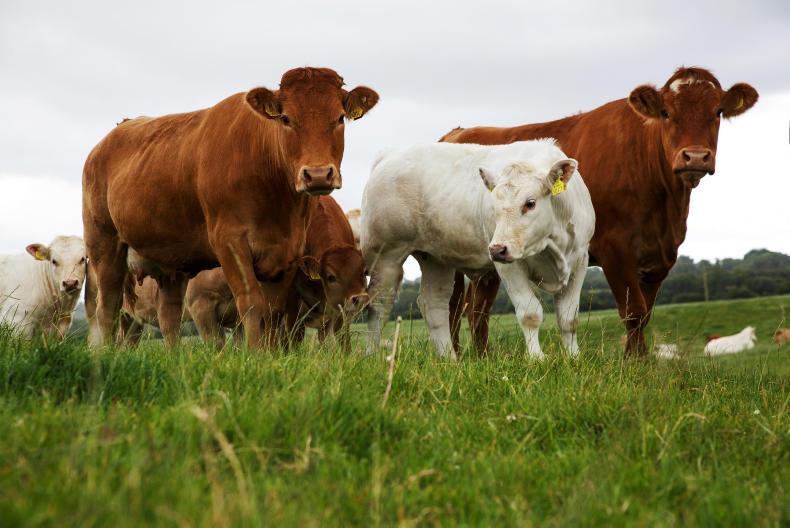EU beef exports rose by 26% for the first four months of 2017, according to the European Commission. This was the largest quantity exported during this period for the last five years. Beef demand from Hong Kong has been the key driver for this increase, according to the commission. Exports of lower-value cuts to new markets such as the Philippines have also been significant.
Overall, the outlook for EU beef exports for 2017 is positive and is forecast to be 10% increase. This is due to a large part to the substantial surge in early 2017. Other factors such as the EU’s renewed access to certain niche markets along with the extensive portfolio of other destinations have helped to sustain the price in the domestic market.
Imports
At the same time, beef imports to the EU fell by 10% for the first four months of 2017. The main reduction came from the fallout from the Brazilian beef scandal which resulted in a 20% fall in imports from Brazil of almost 7,000t.
Argentina, Uruguay and the US, on the other hand, are partly making up the difference by raising the level of their exports to the EU by 56%, 21% and 24% respectively. Australian beef exports to the world market are down, mainly owing to a recapitalisation of the beef herd. The country’s exports to the EU ended 6% lower in 2016, and the first four months of 2017 recorded an even bigger drop of 32% year-on-year.
Live exports
Live exports of cattle from the EU fell by nearly 3% for the first quarter of 2017. This was mainly due to a reduction of live exports to Turkey in January and February. However, these have been strong for the remainder of the year so far.
This is a particularly relevant for Irish producers with the news this week that over 3,000 weanlings were loaded on to a boat at Waterford last Thursday and have now departed for Turkey. This is the third shipment by Purcell Brothers in 2017 and brings the firm to halfway to filling its 20,000-head contract.
At the same time, Israel has established itself as a growing destination for live exports of beef from the EU. Algeria has also opened its market to larger volumes of imports from the EU, which could result in an overall increase of 15 % in live exports in 2017, according to the commission.
Read more
EU beef production to fall in 2018
1,330 farmers apply for the 2017 National Reserve
Ireland to drive 2017 EU milk production
EU beef exports rose by 26% for the first four months of 2017, according to the European Commission. This was the largest quantity exported during this period for the last five years. Beef demand from Hong Kong has been the key driver for this increase, according to the commission. Exports of lower-value cuts to new markets such as the Philippines have also been significant.
Overall, the outlook for EU beef exports for 2017 is positive and is forecast to be 10% increase. This is due to a large part to the substantial surge in early 2017. Other factors such as the EU’s renewed access to certain niche markets along with the extensive portfolio of other destinations have helped to sustain the price in the domestic market.
Imports
At the same time, beef imports to the EU fell by 10% for the first four months of 2017. The main reduction came from the fallout from the Brazilian beef scandal which resulted in a 20% fall in imports from Brazil of almost 7,000t.
Argentina, Uruguay and the US, on the other hand, are partly making up the difference by raising the level of their exports to the EU by 56%, 21% and 24% respectively. Australian beef exports to the world market are down, mainly owing to a recapitalisation of the beef herd. The country’s exports to the EU ended 6% lower in 2016, and the first four months of 2017 recorded an even bigger drop of 32% year-on-year.
Live exports
Live exports of cattle from the EU fell by nearly 3% for the first quarter of 2017. This was mainly due to a reduction of live exports to Turkey in January and February. However, these have been strong for the remainder of the year so far.
This is a particularly relevant for Irish producers with the news this week that over 3,000 weanlings were loaded on to a boat at Waterford last Thursday and have now departed for Turkey. This is the third shipment by Purcell Brothers in 2017 and brings the firm to halfway to filling its 20,000-head contract.
At the same time, Israel has established itself as a growing destination for live exports of beef from the EU. Algeria has also opened its market to larger volumes of imports from the EU, which could result in an overall increase of 15 % in live exports in 2017, according to the commission.
Read more
EU beef production to fall in 2018
1,330 farmers apply for the 2017 National Reserve
Ireland to drive 2017 EU milk production






 This is a subscriber-only article
This is a subscriber-only article










SHARING OPTIONS: